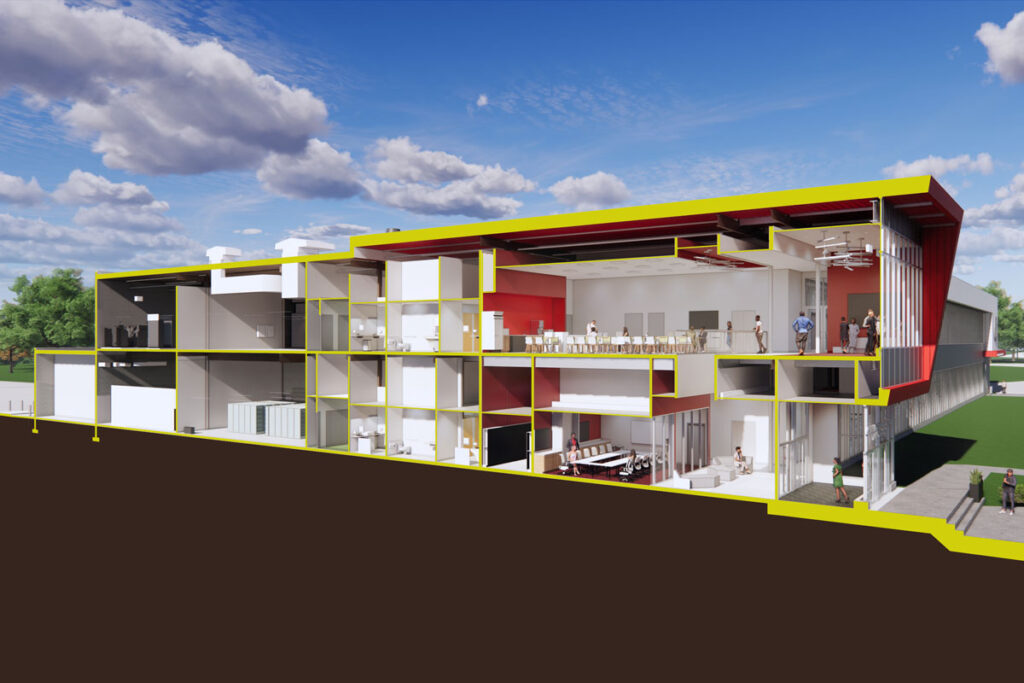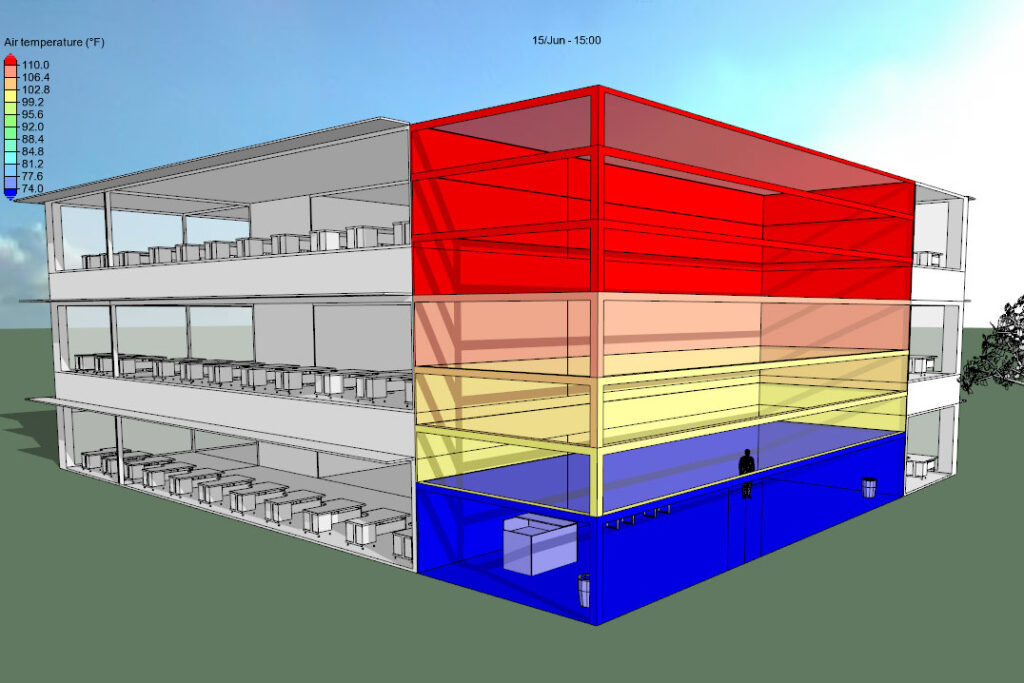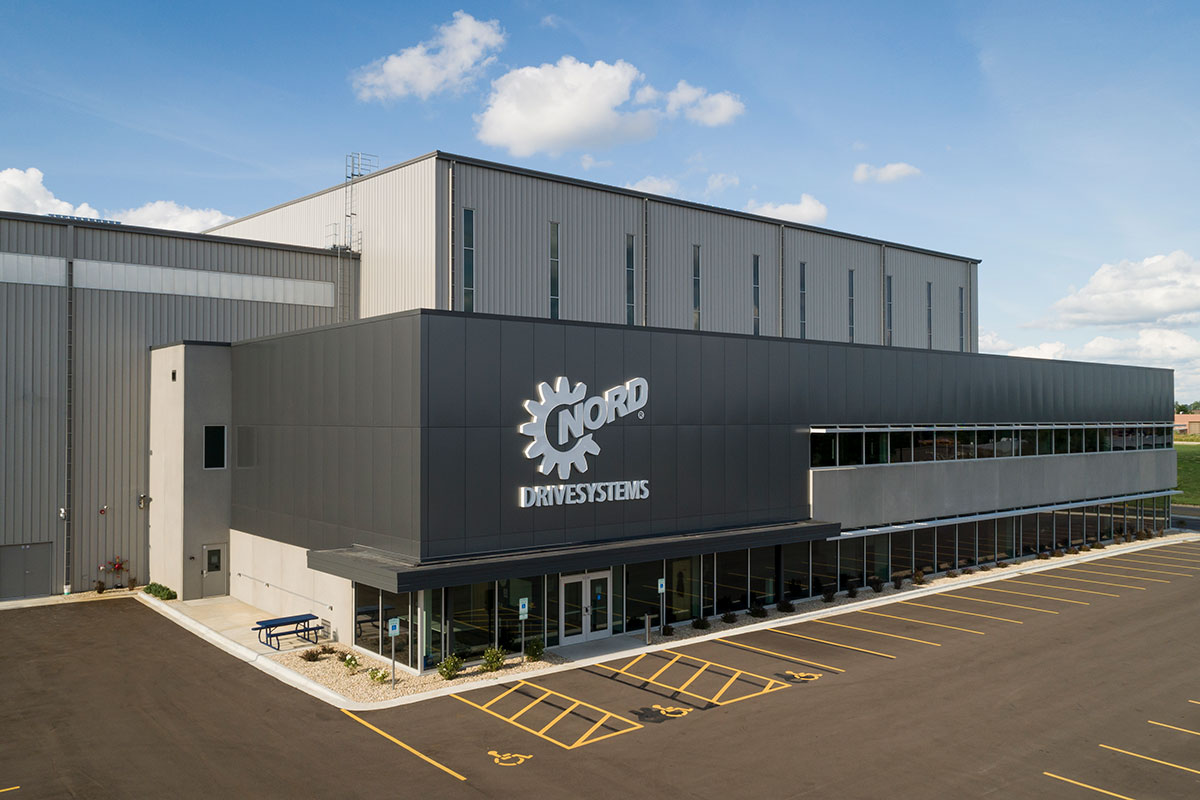- Code compliance
- HVAC and control design
- LEED policy analysis
- Architectural design
- Model predictive control
- Financial incentives
- Retrofit design
ENERGY
MODELING
Photovoltaic Solar Array Utilizing Roof Access
Energy Model Services
Energy modeling is a modern design process that allows our team to identify, analyze, and then select the most sustainable building forms, site orientations, materials, construction practices, and engineered systems for a facility. Given the complex nature of our modern buildings, each opportunity is specifically catered to achieve your specific energy objectives.
Strang’s sustainability experts present your building performance data utilizing an integrated load calculation/energy model process. This process allows the building owner and the builder to make meaningful decisions to improve the long-term operations of the facility. They are able to quickly identify probable facility energy utility costs and savings opportunities. Owners are then able to choose Good-Better-Best system alternatives, supporting code compliance, and attain Focus on Energy incentives best suited for their spaces.
Energy Cost Savings
The initial cost of a building renovation is a small fraction of the cumulative cost of operating and maintenance of that facility. In fact, over 30 years of a building’s life, the present value of maintenance, operations, and utility costs is nearly as great as the initial project costs. That’s why at Strang, energy modeling is a design tool engaged at the earliest possible stage of every project. Energy modeling empowers our clients to make sustainable design decisions that deliver substantial value now and into the future.
Strang’s building performance toolkit includes:


Dynamic Modeling
‘Energy modeling’ typically refers to ‘steady state’ simulations and the calculation of a single point in time. However, at Strang we utilize dynamic energy modeling. This simulates building performance across a full year period, down to one-minute intervals. We understand how the building environment and its systems change and respond over their useful life. Building form, massing, construction, and systems can now all be considered holistically and optimized throughout the year, not just on the single hottest or coldest day.
This performance knowledge across time empowers our designers to make informed decisions that are accurately aligned with your long-term goals. Energy modeling never makes decisions for you. It does, however, deliver quantifiable analytics to our experts. This empowers them to make intelligent, fact-based, sustainable design decisions that offer real, tangible value into your building design.
PROJECTS
Featured Work
NEWS
Related Updates
In this article, we’ll explore intelligent and cost-effective measures to achieve net zero energy when both a building’s design AND engineered systems are synchronized to yield sustainable results.
The View From Here – December 2023
Celebrating the Spirit of United Way's "Community of Caring" Together, we are The Power of Many. Working for All.
Thinking Outside the Big Box Store
The life science industry is experiencing unprecedented growth, driven by advances in biological sciences and the demand for innovative drugs and therapies. In the aftermath of the COVID-19 pandemic, the need for new and expanded life science facilities has surged, with as much as $90 billion in capital pouring into the sector in North America in 2021 alone. In response to this demand, an innovative solution has emerged: adaptive reuse.






